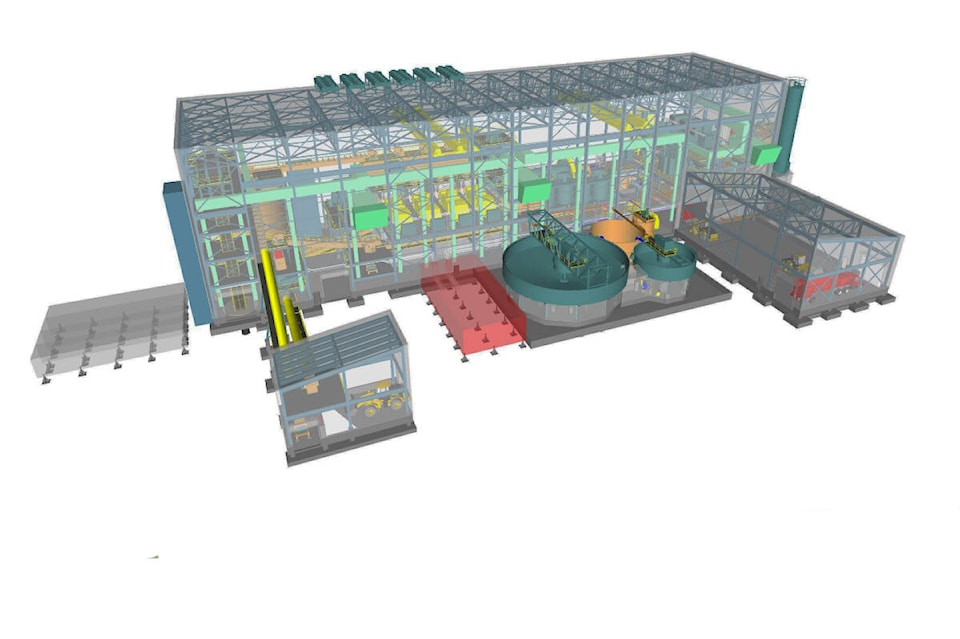There is still a lot of gold in them thar hills around Barkerville.
The provincial government just issued the first permit toward digging for more of it, potenially adding decades of employment to the Quesnel area, but adding a lot of concern and controversy within the community of Wells. Unlike most mines in Canada, where precious minerals and metals are usually found out in the wilderness, this time the streets of Wells are paved over gold. The mine and the town are interconnected.
This was not unexpected. The reason Barkerville and Wells exist as communities in the modern context is the gold rush that started in the mid-19th century. Both towns are named for miners. The company that wants to start the next chapter in that unfolding history is Osisko Development Corp., which is already operating the Bonanza Ledge mine just a few kilometres from where it aims to build the Cariboo Gold mine.
The main issue of contention is the enormous services building. It is set to be built at the gate of the town and stand - and this is a reduction of the height first proposed - 37 metres tall. That’s 121 feet high. Quesnel’s indoor soccer facility is about 50 feet high.
Despite the green light given by the provincial government on the environmental assessment, opponents are optimistic the process is still open for refining the plan. Wells business operator and tourism proponent Dave Jorgenson believes Osisko’s balking at placing the massive structure at Bonanza Ledge, out of sight and in an already active mining area, can be turned around.
“That Bonanza site is already in use in partnership with the Lhtako First Nation, and it’s also approved for use for the life of the project, under this certificate as part of the Cariboo Gold Project,” Jorgenson said. “I’m fully confident that Osisko will have to move the concentrator/services building to the Bonanza Ledge, where it belongs, where it’s larger, where they’ve been mining for 13 years already, and where they already have a use partnership with First Nations which also satisfies the terms of our agreement with the province through the Local Government Act.
“The Province has backed itself into a corner by hastily awarding this certificate. We have been pointing out this legal and socio-economic issue since the inception of this review. If there is a delay now, it’s from bad planning.”
The next phase of the startup is getting a construction permit, which Osisko officials believe will be ready in the first quarter of 2024, and that construction work to begin in the second quarter.
“We are presently actively focused on raising capital to finance construction – a major gating item in order to be in a position to advance Cariboo to construction – while working towards the issuance of the Mines Act and Environmental Management Act permits. We are extremely excited to see the project progressing,” said Philip Rabenok, director of investor relations for Osisko Development Corp.
One of the upsides to placing the services buildging (also called the concentrator building) in the spot Osisko wants is the brownfield underneath it. That brownfield (an environmentally degraded area) would have to be cleaned up for good, with a lot of that cost covered by Osisko.
“Investing in our community to make it a more prosperous, safe and vibrant place is an important part of our commitment to the District of Wells,” said Rabenok. “This includes our contributions to vital infrastructure, such as schools, roads, and clean drinking water.”
Jorgenson, part of a group of Wells residents who call themselves FRED: Friends of Responsible Economic Development, points to the government’s Official Community Plan as law that trumps this permit.
“That land use plan, demanded by the province through the Local Government Act, specifically prohibits many of the activities suggested by the Cariboo Gold Project,” Jorgenson said. “So, it’s unfortunate, to me, that the Province and Osisko have taken what should have been a mutually beneficial plan and turned it into a jurisdictional battle that will only create dissension between people, and disparage the provincial government’s own decision making credibility.”
The provincial government took note of the concerns, said the ministers in the joint statement issued by the ministries of mining and environment. They felt, after years of consultation and study, that the bigger benefits would be for the mining plan to unfold in this way.
Ministers Josie Osborne (mines) and George Heyman (environment) concluded, “The certificate includes conditions and specifies design parameters by which the certificate holder must abide. These give us the confidence to conclude that Cariboo Gold will be carried out such that no significant adverse effects are likely to occur. We are of the view that the benefits of the project outweigh the costs, and it is in the public interest.”
READ MORE: Wells contingent opposes mine layout plan
READ MORE: Osisko explains the problems of Plan B in Wells

